

PDF documents require Adobe Acrobat Reader
- Citrus Thrips
- Wooly Whiteflies
- California Red Scale
- Citrus Mealybug
- Cottony-cushion Scale
- Asian Citrus Psyllid
- Citrus Peelminer
- Citrus Leafminer
- Omnivorous Leafroller
- Texas Citrus Mite
- Yuma Spider Mite
- Citrus Flat Mite
- Twospotted Spider Mite
Note: These photos accompany Section 2C of the Arizona Crop Protection Association Study Guide for Agricultural Pest Control Advisors.
 Figure 1. Second instar citrus thrips.
Figure 1. Second instar citrus thrips. Figure 2. Citrus thrips adult.
Figure 2. Citrus thrips adult. Figure 3. Adult western flower thrips.
Figure 3. Adult western flower thrips. Figure 4. Distinguishing characteristics of citrus thrips and western flower thrips.
Figure 4. Distinguishing characteristics of citrus thrips and western flower thrips. Figure 5. Rind scarring on an orange due to the feeding by citrus thrips beneath the sepal when the fruit was young.
Figure 5. Rind scarring on an orange due to the feeding by citrus thrips beneath the sepal when the fruit was young.
 Figure 6. Adult woolly whitefly.
Figure 6. Adult woolly whitefly. Figure 7. Second instar woolly whiteflies and eclosed eggs.
Figure 7. Second instar woolly whiteflies and eclosed eggs. Figure 8. Third and fourth instar woolly whitefly covered by woolly waxy filaments.
Figure 8. Third and fourth instar woolly whitefly covered by woolly waxy filaments. Figure 9. Sooty mold growth from woolly whitefly honeydew accumulation on citrus leaves.
Figure 9. Sooty mold growth from woolly whitefly honeydew accumulation on citrus leaves. Figure 10. Eclosed pupae (left) from an adult woolly whitefly leaving a vertical split and (right) from a parasitoid leaving a round hole.
Figure 10. Eclosed pupae (left) from an adult woolly whitefly leaving a vertical split and (right) from a parasitoid leaving a round hole. Figure 11. Eretmocerous sp. is a common and very effective parasitoid of woolly whitefly in Arizona. They appear as small yellow
Figure 11. Eretmocerous sp. is a common and very effective parasitoid of woolly whitefly in Arizona. They appear as small yellow gnats
with three distinctive red dots (ocelli) on the tops of their heads.
 Figure 12. An orange infested with California red scale.
Figure 12. An orange infested with California red scale. Figure 13. An adult male California red scale, referred to as a flyer. (photo courtesy of Jack Kelly Clark, University of California, Regents).
Figure 13. An adult male California red scale, referred to as a flyer. (photo courtesy of Jack Kelly Clark, University of California, Regents). Figure 14. A pheromone trap used to monitor adult male California red scale activity.
Figure 14. A pheromone trap used to monitor adult male California red scale activity.
 Figure 15. Adult female citrus mealybug.
Figure 15. Adult female citrus mealybug. Figure 16. Citrus mealybug crawlers and nymphs on a lemon fruit.
Figure 16. Citrus mealybug crawlers and nymphs on a lemon fruit. Figure 17. Adult male citrus mealybug.
Figure 17. Adult male citrus mealybug. Figure 18. Lemons heavily infested with citrus mealybugs.
Figure 18. Lemons heavily infested with citrus mealybugs. Figure 19. Citrus mealybug mummy, with parasitoid exit hole.
Figure 19. Citrus mealybug mummy, with parasitoid exit hole. Figure 20. Anagraphus sp., a common parasitoid of citrus mealybug. Eclosed pupa (right), adult (center), and parasitoid exposed in pupa (left).
Figure 20. Anagraphus sp., a common parasitoid of citrus mealybug. Eclosed pupa (right), adult (center), and parasitoid exposed in pupa (left).
 Figure 21. The adult female cottony-cushion scale is easily recognizable by the white, fluted egg sac.
Figure 21. The adult female cottony-cushion scale is easily recognizable by the white, fluted egg sac. Figure 22. Second instar cottony-cushion scale.
Figure 22. Second instar cottony-cushion scale. Figure 23. First instar cotton-cushion scale nymphs (left) can be distinguished from first instar vedalia beetles (right) primarily by noting the lack of visible antennae on the vedalia beetle (photo courtesy of Beth-Grafton Cardwell, University of California, Davis).
Figure 23. First instar cotton-cushion scale nymphs (left) can be distinguished from first instar vedalia beetles (right) primarily by noting the lack of visible antennae on the vedalia beetle (photo courtesy of Beth-Grafton Cardwell, University of California, Davis). Figure 24. Adult vedalia beetle.
Figure 24. Adult vedalia beetle.
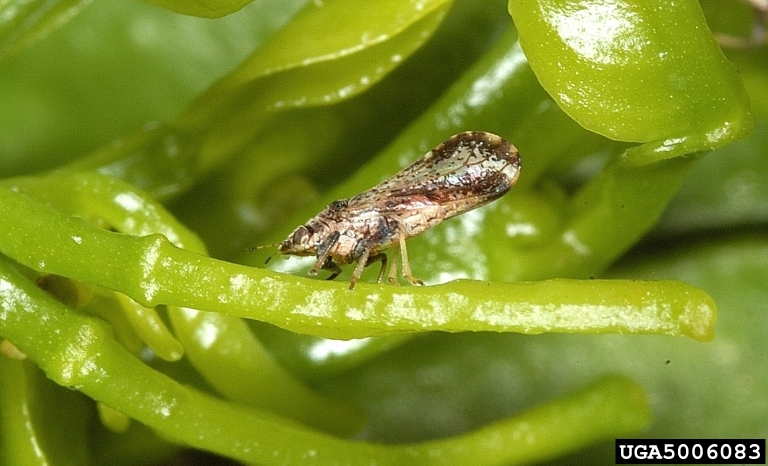 Figure 25. ACP adult showing characteristic feeding position. Photo by David Hall, USDA Agricultural Research Service.
Figure 25. ACP adult showing characteristic feeding position. Photo by David Hall, USDA Agricultural Research Service.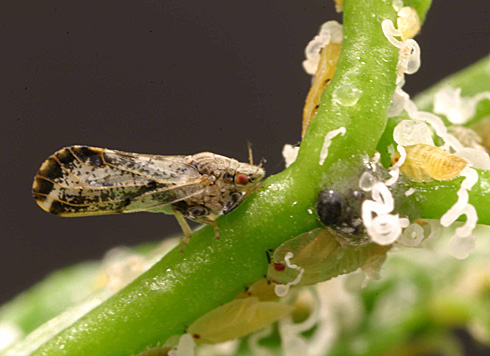 Figure 26. ACP adult and nymphs with characteristic waxy tubules. Photo by Michael Rogers, University of Florida.
Figure 26. ACP adult and nymphs with characteristic waxy tubules. Photo by Michael Rogers, University of Florida.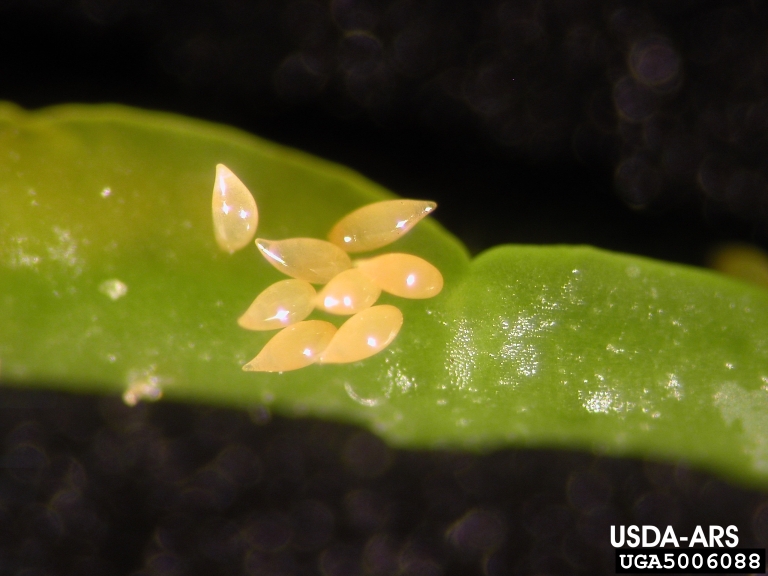 Figure 27. Football shaped ACP eggs. Photo by David Hall, USDA Agricultural Research Service.
Figure 27. Football shaped ACP eggs. Photo by David Hall, USDA Agricultural Research Service.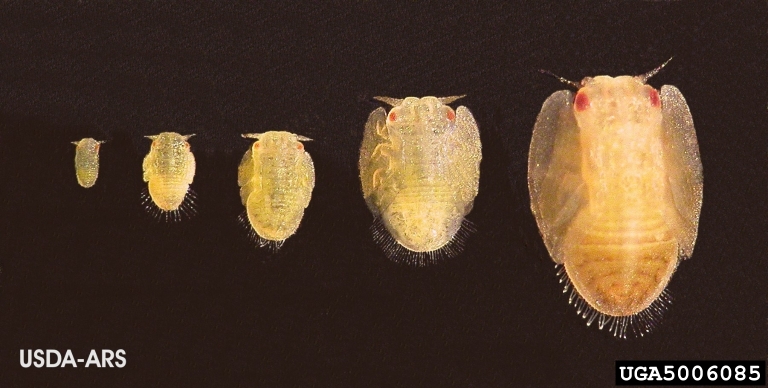 Figure 28. The five nymphal instar stages of ACP. Photo by David Hall, USDA Agricultural Research Service.
Figure 28. The five nymphal instar stages of ACP. Photo by David Hall, USDA Agricultural Research Service.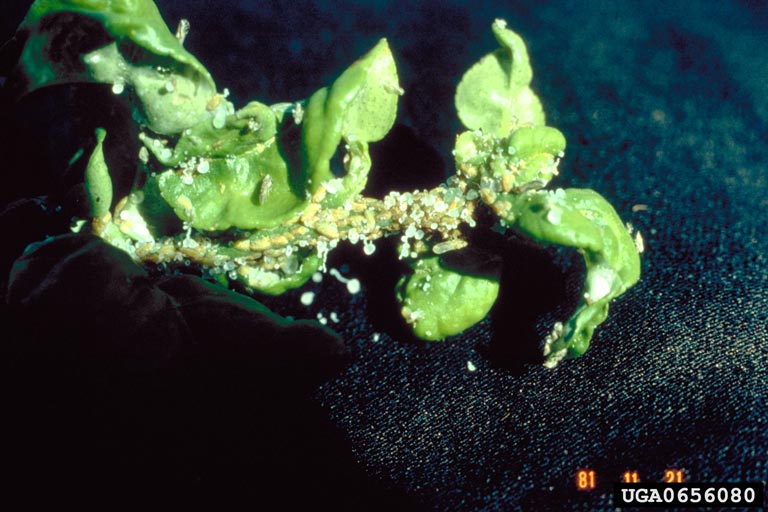 Figure 29. Leaf malformation damage on young citrus. Photo by INRA-Bordeaux Archive, Institut National de la Recherche Agronomique, Bugwood.org.
Figure 29. Leaf malformation damage on young citrus. Photo by INRA-Bordeaux Archive, Institut National de la Recherche Agronomique, Bugwood.org. Figure 30. Defoliation damage to new citrus flush. Photo by Michael Rogers, University of Florida.
Figure 30. Defoliation damage to new citrus flush. Photo by Michael Rogers, University of Florida.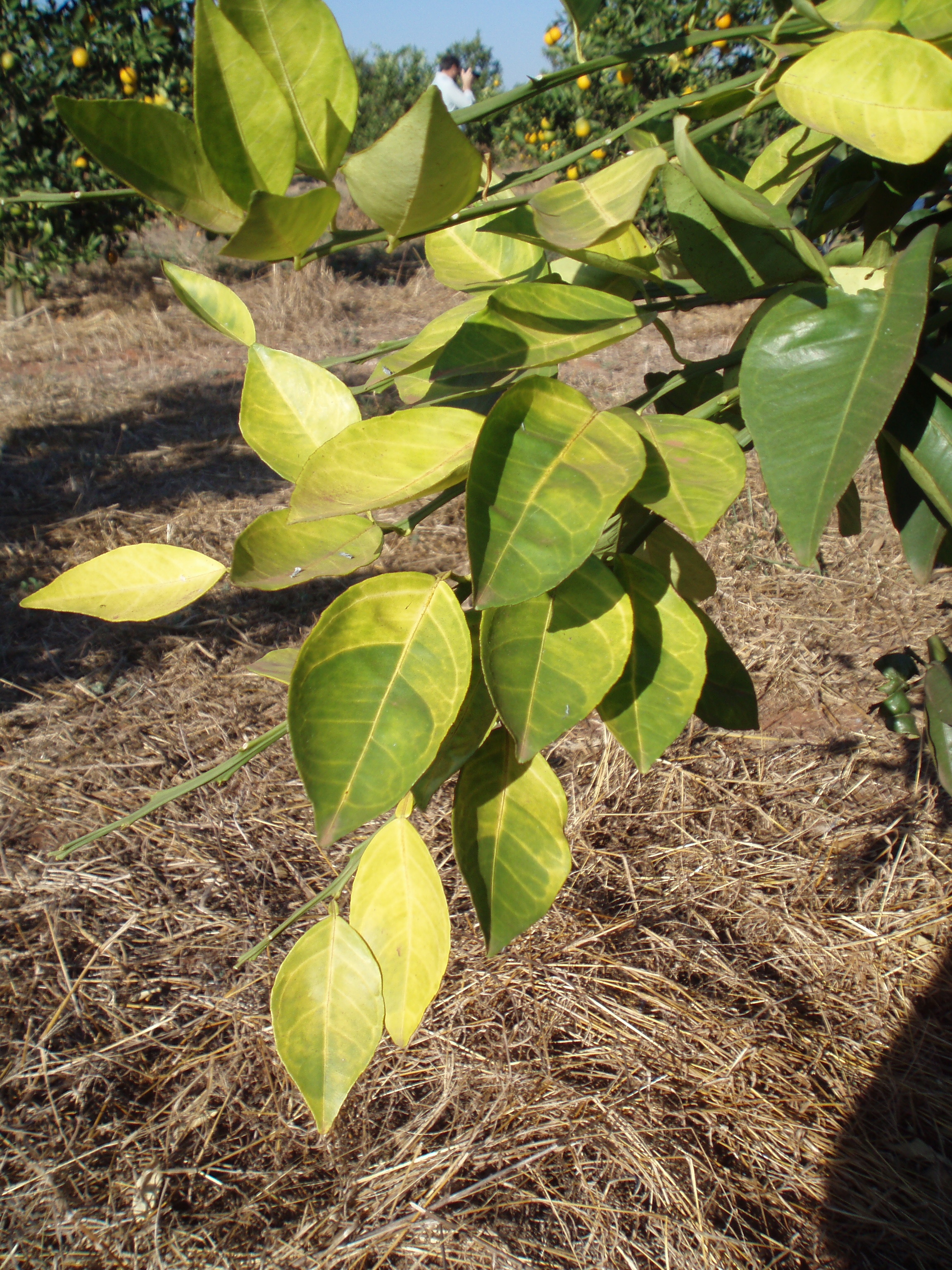 Figure 31. Leaf mottling characteristic of CG on sweet orange.
Figure 31. Leaf mottling characteristic of CG on sweet orange.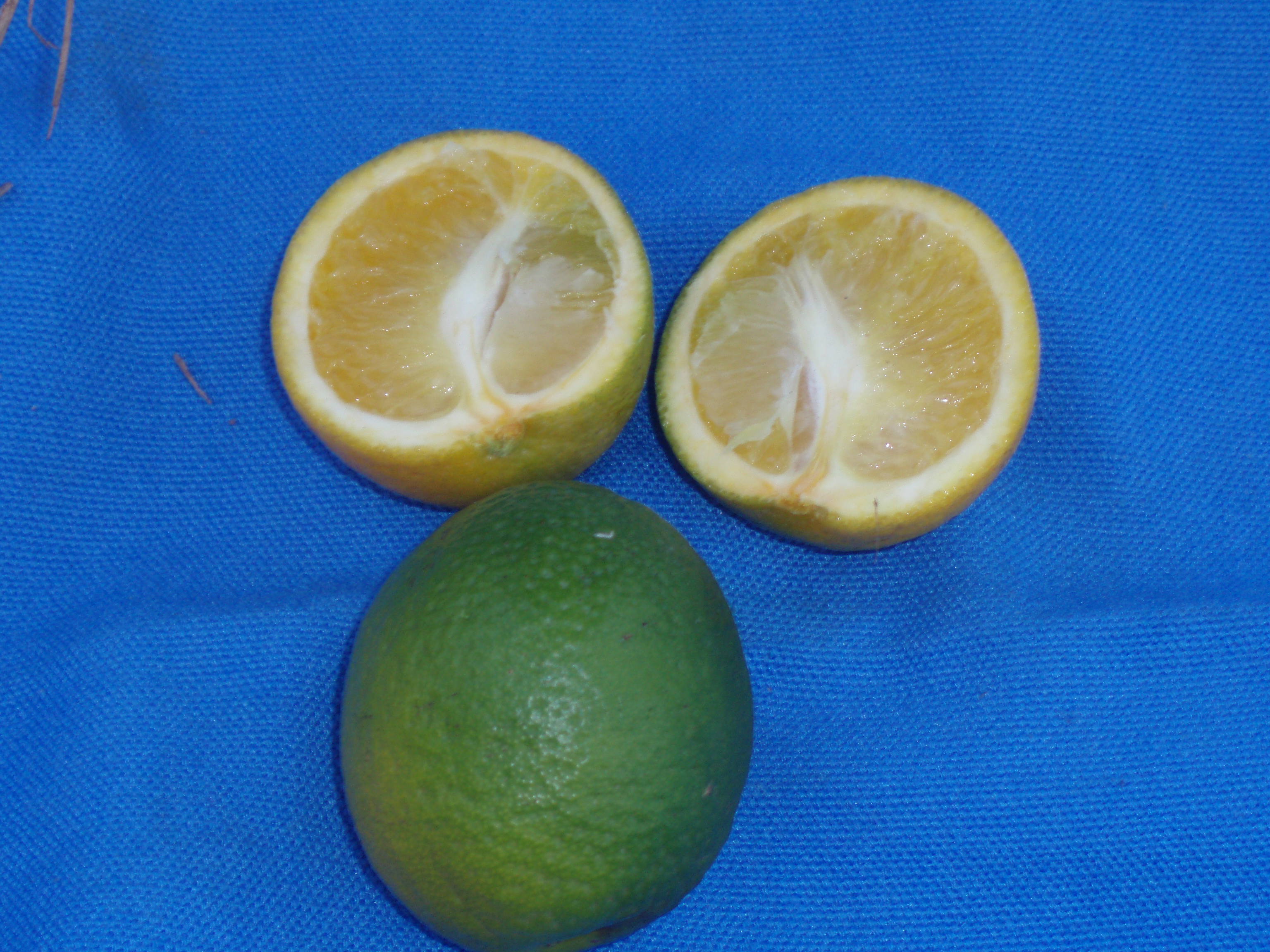 Figure 32. Sweet orange fruit of trees infected with CG. Note that fruit is excessively green and misshapen.
Figure 32. Sweet orange fruit of trees infected with CG. Note that fruit is excessively green and misshapen.
 Figure 33. The citrus peelminer is a dark-gray moth about the size of a mosquito.
Figure 33. The citrus peelminer is a dark-gray moth about the size of a mosquito. Figure 34. The spinning form of the citrus peelminer larvae cuts out of the mine and pupates in crevasses on the tree or in the ground litter.
Figure 34. The spinning form of the citrus peelminer larvae cuts out of the mine and pupates in crevasses on the tree or in the ground litter.  Figure 35. Citrus peelminers pupate in crevasse on the tree or in ground trash.
Figure 35. Citrus peelminers pupate in crevasse on the tree or in ground trash. Figure 36. Grapefruit with extensive mining by citrus peelminer.
Figure 36. Grapefruit with extensive mining by citrus peelminer. Figure 37. Cirrospilus coachellae is an important parasitoid of citrus peelminer (photo courtesy of Beth-Grafton Cardwell, University of California, Davis).
Figure 37. Cirrospilus coachellae is an important parasitoid of citrus peelminer (photo courtesy of Beth-Grafton Cardwell, University of California, Davis).
 Figure 38. The citrus leafminer moth is about the size of a mosquito with front wings that are silvery in color with darker stripes and black spots on the tips.
Figure 38. The citrus leafminer moth is about the size of a mosquito with front wings that are silvery in color with darker stripes and black spots on the tips. Figure 39. Citrus leafminer larva (top) is translucent and yellow-green in color, and leaves a serpentine mine (bottom) on the underside of young citrus leaves.
Figure 39. Citrus leafminer larva (top) is translucent and yellow-green in color, and leaves a serpentine mine (bottom) on the underside of young citrus leaves.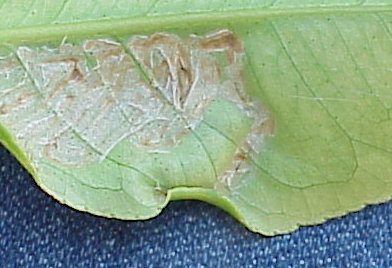 Figure 40. Citrus leafminer forms a cocoon within a pupal cell at the leaf margin.
Figure 40. Citrus leafminer forms a cocoon within a pupal cell at the leaf margin. Figure 41. Citrus leafminer mining results in leaf deformation, partial leaf chlorosis, necrosis, and some leaf drop.
Figure 41. Citrus leafminer mining results in leaf deformation, partial leaf chlorosis, necrosis, and some leaf drop.
 Figure 42. The omnivorous leafroller feeds within rolled leaves and is a frequent pest in citrus nurseries.
Figure 42. The omnivorous leafroller feeds within rolled leaves and is a frequent pest in citrus nurseries.
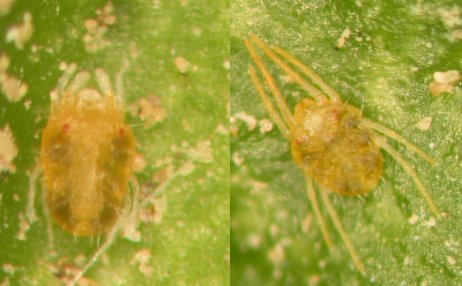 Figure 43. Texas citrus mite female (left), and male (right) is a large, cool season mite, predominant during early spring.
Figure 43. Texas citrus mite female (left), and male (right) is a large, cool season mite, predominant during early spring. Figure 44. Close up of speckling on a lemon leaf (top) and defoliation of grapefruit in Texas (bottom) caused by Texas citrus mite (bottom photo courtesy of J. Victor French - Texas A&M University, Kingsville).
Figure 44. Close up of speckling on a lemon leaf (top) and defoliation of grapefruit in Texas (bottom) caused by Texas citrus mite (bottom photo courtesy of J. Victor French - Texas A&M University, Kingsville).
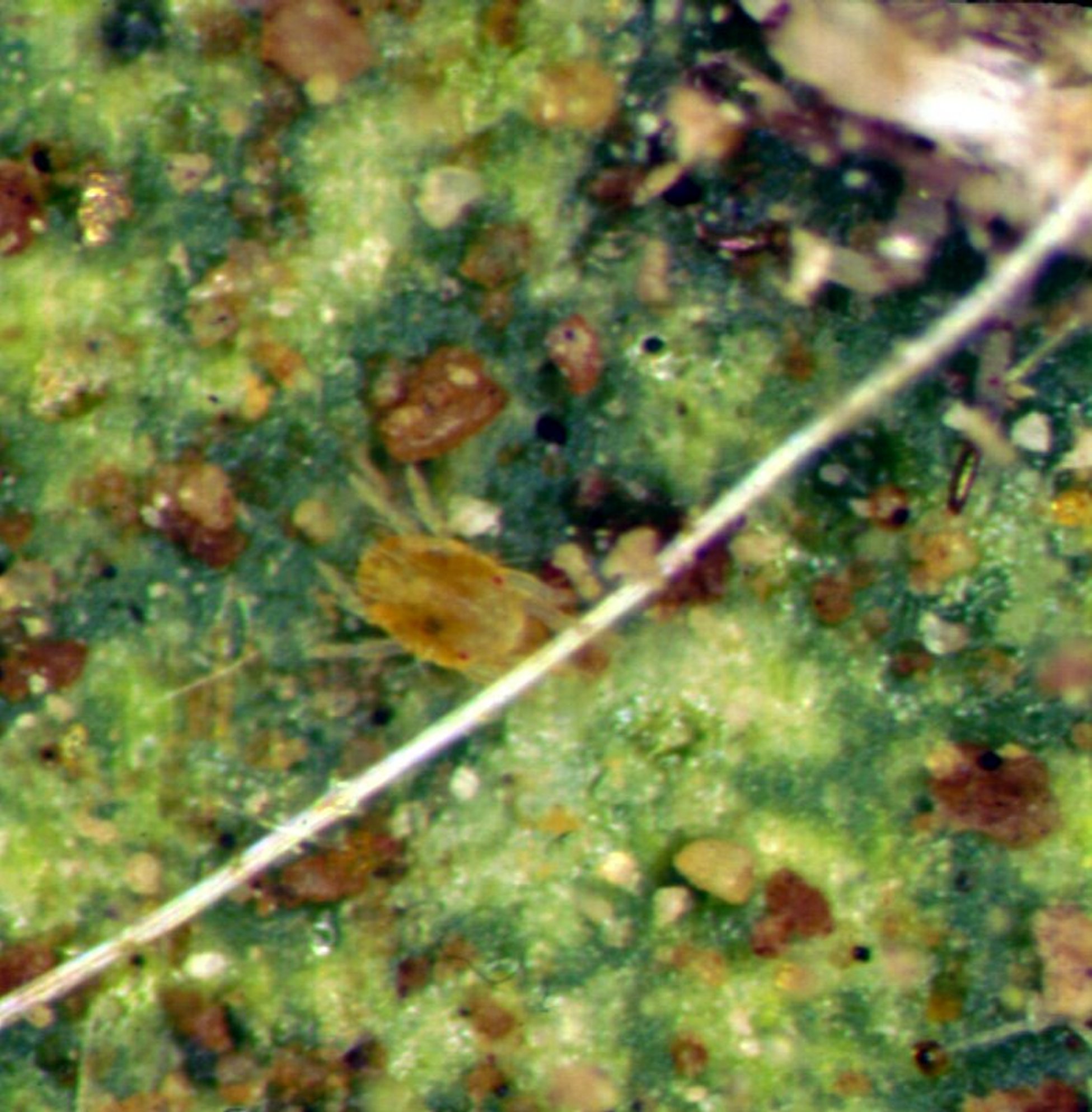 Figure 45. Yuma spider mites prefer to feed on the underside of leaves. Infestations are conspicuous due to the light webbing that traps dirt and detritus.
Figure 45. Yuma spider mites prefer to feed on the underside of leaves. Infestations are conspicuous due to the light webbing that traps dirt and detritus. Figure 46. Pitting on a lemon (top) and leaf speckling (bottom) due to Yuma spider mite feeding. Mites prefer to feed on the underside of leaves.
Figure 46. Pitting on a lemon (top) and leaf speckling (bottom) due to Yuma spider mite feeding. Mites prefer to feed on the underside of leaves.
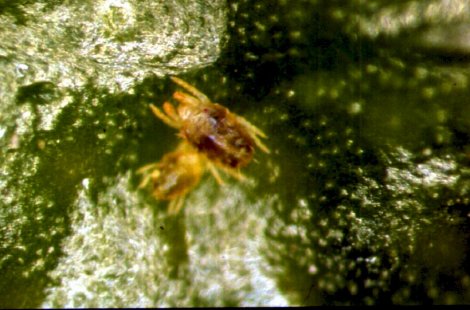 Figure 47. Citrus flat mite (seen here hiding in a crevasse of a lemon fruit) is a very small, flat, heat tolerant mite that prefers to feed on the fruit.
Figure 47. Citrus flat mite (seen here hiding in a crevasse of a lemon fruit) is a very small, flat, heat tolerant mite that prefers to feed on the fruit.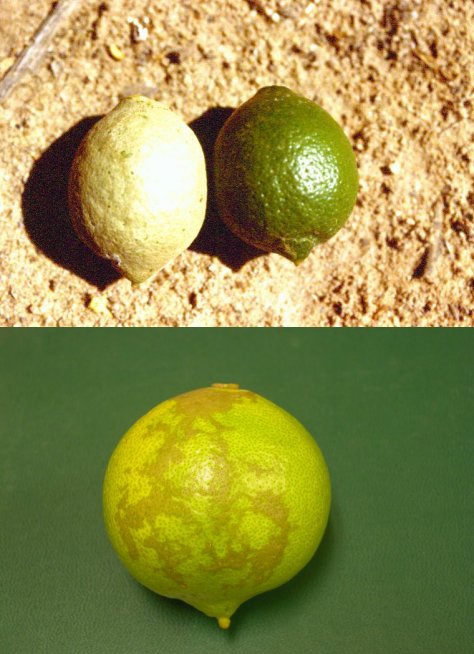 Figure 48. (Top) Lemon on left completely silvered from extensive feeding by citrus flat mite, relative to normal lemon on right; (Bottom) citrus flat mite scarring usually begins where citrus thrips have previously fed, but spreads the scarring in an irregular pattern. Scarring starts out silvery in color, but becomes brown and corky with age, or after fumigation for coloring<./dt>
Figure 48. (Top) Lemon on left completely silvered from extensive feeding by citrus flat mite, relative to normal lemon on right; (Bottom) citrus flat mite scarring usually begins where citrus thrips have previously fed, but spreads the scarring in an irregular pattern. Scarring starts out silvery in color, but becomes brown and corky with age, or after fumigation for coloring<./dt>
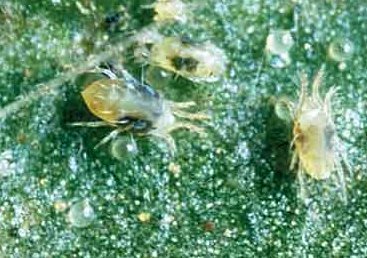 Figure 49. Twospotted spider mite is an occasionally pest of Arizona citrus that usually occurs during late summer.
Figure 49. Twospotted spider mite is an occasionally pest of Arizona citrus that usually occurs during late summer.
Insects | Diseases | Weeds | Pesticides | News
Weather | Research | Photos | Contacts | General Info
document located at: http://cals.arizona.edu/crops/citrus/pcaphots.html
Copyright © 2001 University of Arizona,
College of Agriculture and Life Sciences
Webmaster: Al Fournier (acis@ag.arizona.edu)